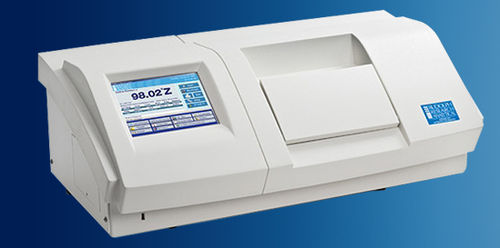
- Metrology - Laboratory
- Laboratory Equipment
- Digital saccharimeter
- Rudolph Research Analytical
Digital saccharimeter AUTOPOL 880 seriesNIR
Add to favorites
Compare this product
Characteristics
- Technology
- digital, NIR
Description
This is Rudolph’s most popular saccharimeter. It is used by 98% of all US sugar mills, 100% of all US customs labs and can be found in thousands of sugar mills around the world. It has 0.01 accuracy and is available in both 2 and 4-wavelength versions. Recommended for the sugar industry, the Autopol® 880 digital saccharimeter is a dual wavelength microprocessor-based digital saccharimeter capable of measuring at both 589 nm and 880 nm. The 880 nm ICUMSA Approved near infrared wavelength allows measurement of dark sugar factory juices, while the AUTOPOL® Automatic Saccharimeter Purity Mode allows simultaneous measurement and display of PURITY, BRIX, and POL.
Dual Wavelengths
The most important feature of the AUTOPOL® saccharimeter models IIZ, 880 and 880T are their ability to measure at two wavelengths: 589 nm and 880 nm (NIR). Select 589 nm for conventional analysis using chemicals or lead clarifiers or select 880 nm for polarimetric sugar measurements in the near-infrared (NIR). 880 nm is above the absorption level of most dark sugar factory solutions allowing measurement of filtered but non-lead clarified juices. The dark sample measurement bar gets darker in proportion to the darkness of the sample being measured. When the bar is completely dark the instrument has reached its measurement limit.
Dilution and Cell Length Correction
Whether your sugar analysis requires a 25mm, 50mm, 100 mm or 200 mm cell, whether you use 1/2 normal (13g/100ml), 1/4 normal (6.5g/100ml) or full weight sugar solutions,
Catalogs
No catalogs are available for this product.
See all of Rudolph Research Analytical‘s catalogsOther Rudolph Research Analytical products
Saccharimeters
*Prices are pre-tax. They exclude delivery charges and customs duties and do not include additional charges for installation or activation options. Prices are indicative only and may vary by country, with changes to the cost of raw materials and exchange rates.





